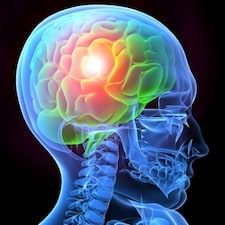What is a visio-vestibular examination for concussion and is it reliable to diagnose traumatic brain injury in children?
 A concussion is a traumatic brain injury that affects the brain function. It is diagnosed quite frequently among children however its diagnosis remains challenging. Doctors often rely on symptoms and historical factors.
A concussion is a traumatic brain injury that affects the brain function. It is diagnosed quite frequently among children however its diagnosis remains challenging. Doctors often rely on symptoms and historical factors.
A recent study published by the “Minds Matter Concussion Program at the Children’s Hospital of Philadelphia” found that the Visio-Vestibular Examination is an easy and useful tool to distinguish to concussed from not concussed children following a head injury. The exam can also be conducted outside of the Emergency Department setting.
The Visio-Vestibular Examination (VVE) is a series of examinations that determine if the patient has some degree of visio-vestibular deficit such as impaired eye movements and pupil response. The following examinations are being done:
- A rapid lateral gaze which tests for smooth pursuits and nystagmus during which the physician moves his finger horizontally and quickly from one side to the other and asks the patient to follow it with his eyes, checking for abnormal jerky and jumpy eyes movements. The physician then stops his finger in the middle of the field and checks for nystagmus (repetitive uncontrolled movement)
- Horizontal and vertical saccades during which the patient is asked to move their eyes rapidly from one side to the other 20 times. The physician will indicate with his fingers where to look at and will ask the patient to stop if they experience any symptoms such as headache or dizziness during the test. The physician will record after how many repetitions the symptoms are experienced. The same tests are then done vertically.
- The third test is gaze stability during which the patient fixes with their eyes on the physician’s finger while moving their head from one side to the other and up and down 20 times. The patient is asked to stop if they experience any dizziness or headache.
- The physician will then perform a convergence test that measures the ability to view a near target without double vision
- The next test measures the monocular accommodation. The test measures the ability of each eye to look at a near target without seeing it blurry.
- Ultimately in the tandem gait test, the patient is asked to walk forward and backward with their eyes open and then closed to check their balance.
Researchers found that the VVE was helpful in testing deficits in children or adolescents who suffered a concussion, They also found that the test was a good tool to monitor the recovery.
 New York Personal Injury Attorneys Blog
New York Personal Injury Attorneys Blog


